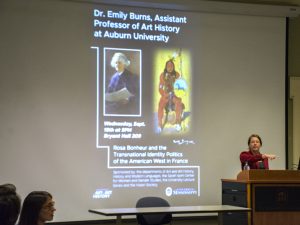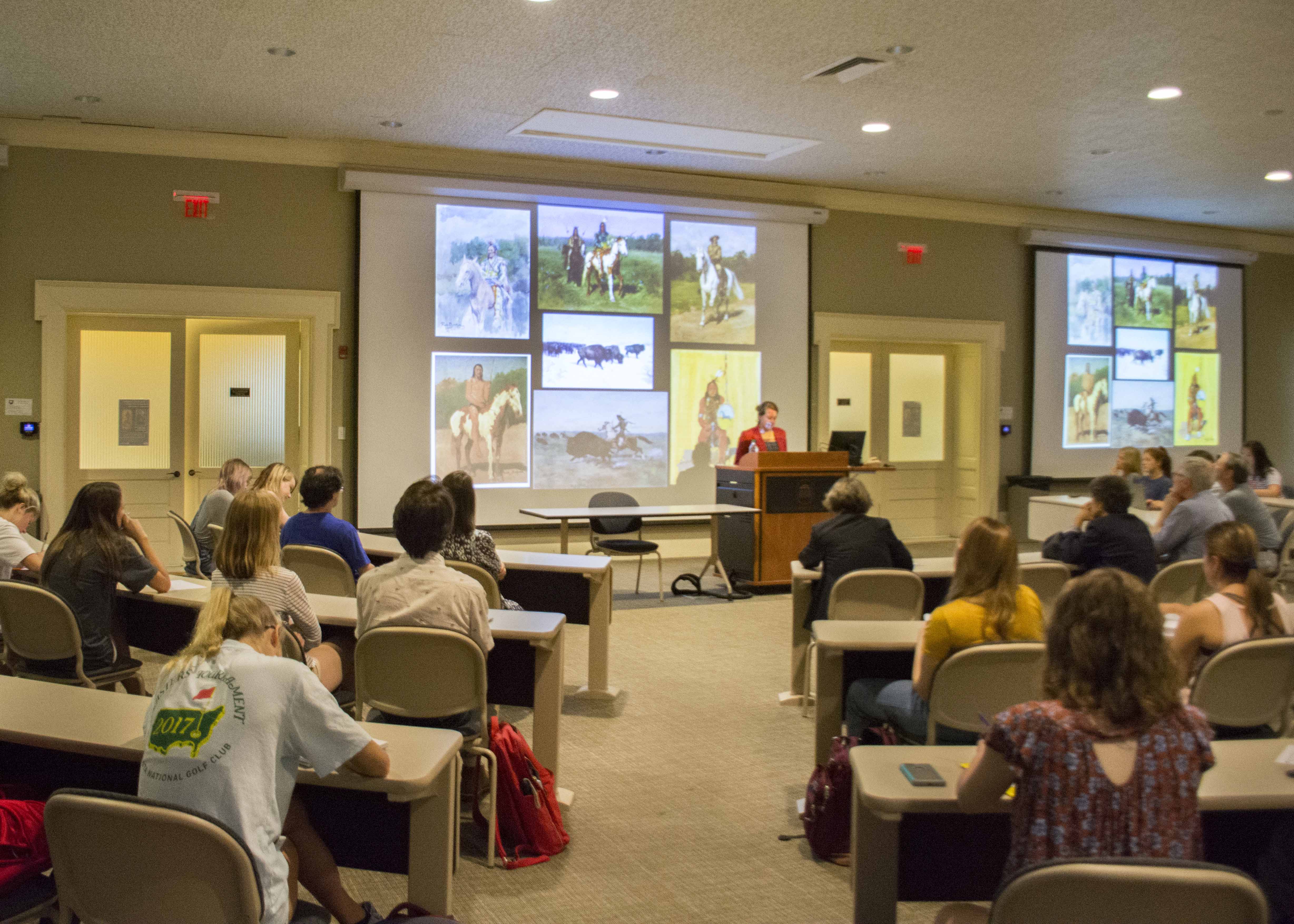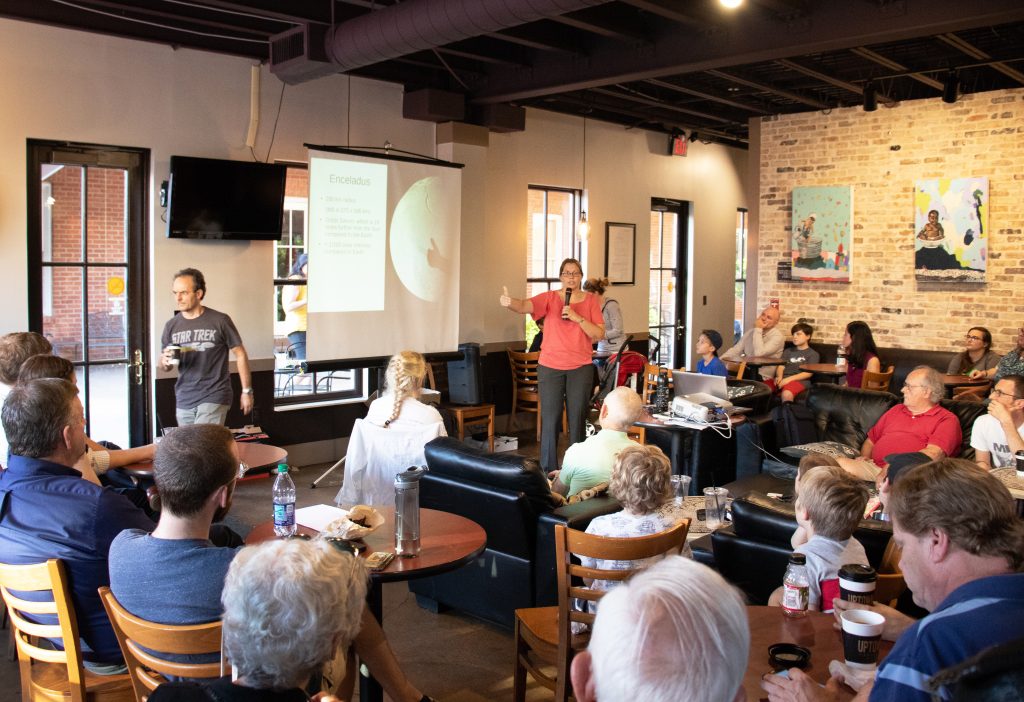Despite the turbulence of the fall semester, interested students found a moment of tranquility at a lecture given by Emily Burns, an assistant professor of art history at Auburn University, on Wednesday night in Bryant Hall.
The lecture, titled “Rosa Bonheur and the Transnational Identity Politics of the American West in France,” explored French Realism, an art style that flourished in the mid- to late 1800s, and its connection to gender struggles of the mid-19th century. Burns’ lecture was sponsored by the departments of art and art history, history and modern languages as well as by the Sarah Isom Center for Women and Gender Studies.

Burns was asked to speak to Ole Miss students by Ole Miss art history professor Louise Arizzoli after the two met at a conference in 2017. The two professors share interests in 19th-century France, the American community in Paris, representations of America and depictions of Native Americans in European art.
Burns is the author of “Transnational Frontiers: The American West in France,” and her research has been supported by notable organizations such as the Metropolitan Museum of Art, the Smithsonian American Art Museum and the New England Regional Fellowship Consortium. She said she hopes her work affects social conversations.
“I hope my research foregrounds to intervene in social conversations, even if it doesn’t affect anything in society,” Burns said.
The lecture explored Europe in the mid-1800s by looking at the work of artist Rosa Bonheur, her contributions to the French Realism style and changing gender ideals of the time.
Despite this being an era during which art-making was a career available almost exclusively to men, Bonheur viewed this obstacle as an opportunity to challenge the roles society had placed on her and other women of the period. Bonheur clothed herself in men’s garments to gain access to subject matter beyond domestic life.
She also used her newly found freedom of artistic expression to pursue her interests in the American West. Despite never traveling to the American West, Bonheur was curious about its politics, Native American land rights and these issues’ relations to France. She found inspiration in these topics and made paintings that depicted her perception of the American West for about 10 years.
This art also related to gender roles. Bonheur used her art as an open stage for her own gender performance as a lesbian woman, which inspired others by challenging gender roles during a time when concepts such as sexual fluidity were unfathomable to most people.
Burns talked about how Bonheur’s work influenced art history, saying that through a modern lens, art historians who previously focused on Impressionism moved toward the theme of democratization and how multiple styles — such as French Realism and Impressionism — coexisted with one another.
The lecture was well-attended by students, some of whom, such as freshman political science major Anna Warden, saw parallels between Bonheur’s era and today.

“The lecture inspired me to view gender politics in France, in the American West and in my own society’s art forms a little bit differently,” Warden said. “If Rosa Bonheur could challenge such unheard-of ideals and be accepted centuries ago, people of today can definitely perceive new and contemporary notions with open arms.”
Throughout her lecture, Burns gave students insight into how French Realism can be applied in the realm of modern society. Burns argued that — just as 19th-century French artists rejected conventional themes in an effort to fight for democratic reform — Ole Miss scholars can do the same with a newfound knowledge of how such revolutionary ideas operate.
“College is a riveting and exciting time,” Burns said. “It is a microcosm of the world and a small bubble that allows individuals to see the importance of diversity. Through topics such as French Realism and transnational identities, students are prompted to question the themes these objects raise in a relevant place.”















